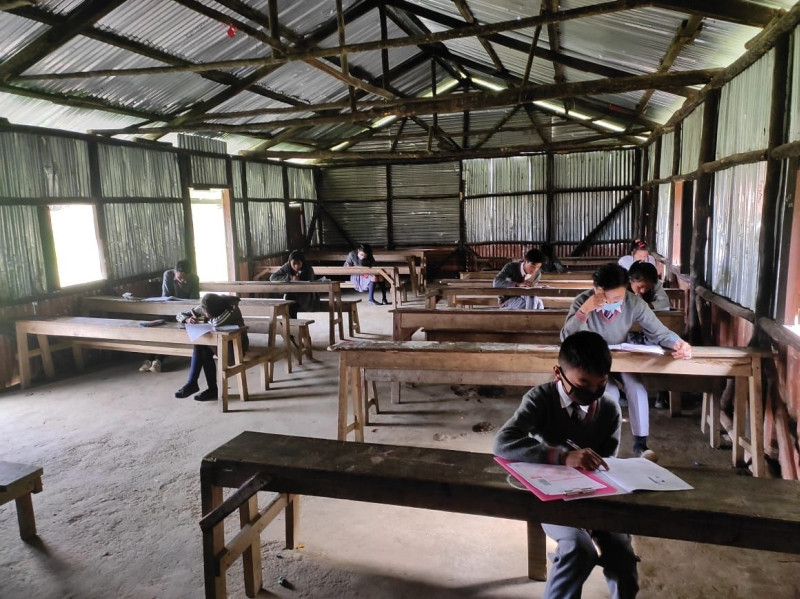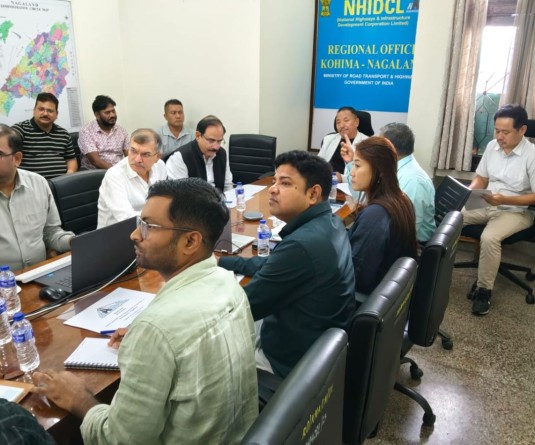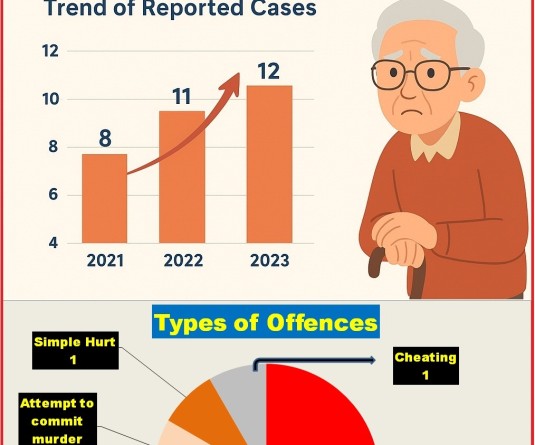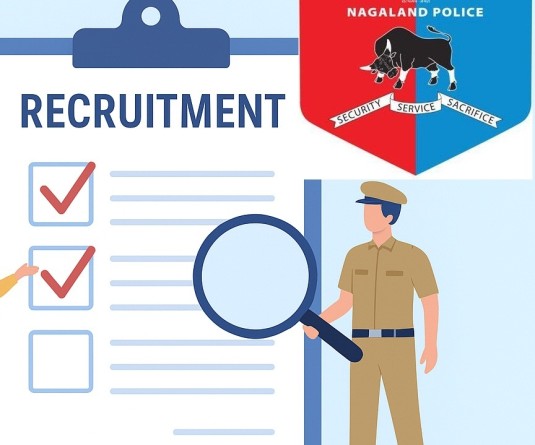Students attend classes in a socially-distanced classroom at a school in Nagaland. (File Photo | For representaional purpose only)

More students taking private tuitions
Dimapur, November 17 (MExN): Despite a clear shift from private schools to government schools across most states of India in the last three years, in Nagaland, the enrolment in government schools has decreased from 46.2% in 2018 to 34.8 % in 2021, according to the 16th Annual Status of Education Report (Rural) 2021.
The ASER report which was released online on November 17 also indicated that the trend in Nagaland was accompanied by an increase in proportion of children currently not enrolled from 1.8% in 2018 to 19.6% in 2021.
The report is based on a survey that was conducted in 25 states and three Union Territories. It covered a total of 76,706 households and 75,234 children in the age group of five to 16 years. It also included teachers or head teachers from 7,299 government schools offering primary grades.
At an all-India level, for children in the age group of 6-14, enrolment in private schools decreased from 32.5% in 2018 to 24.4% in 2021. This shift is seen in all grades and among both boys and girls. However, boys are still more likely to be enrolled in private schools than girls, the report stated.
Nationally, the proportion of children not currently enrolled in school increased from 1.4% to 4.6% in 2020. This remained unchanged between 2020 and 2021.
Among older children in the age group of 15-16, an increase in government school enrolment from 57.4% in 2018 to 67.4% has been driven by a marked decline in the proportion of out of school children in this age group, from 12.1% in 2018 to 6.6% in 2021, as well as by decreasing private school enrolment in many parts of the country, the report stated.
It however noted that there is a fair amount of variation in enrolment at the state level with the national increase in government school enrolment driven by larger states. In contrast, in many north-eastern states, government school enrolment has fallen during this period, and the proportion of children not enrolled in school has increased.
“Time will reveal if these patterns constitute a transitory phase, as schools reopen across states; or whether they will become a permanent feature of schooling in rural India,” the report stated.
Increase in children taking tuition
At the national level, in 2018, less than 30% children took private tuition classes. In 2021, this proportion has jumped to almost 40% and in Nagaland, this proportion has increased from 27.9% to 47% in 2021.
According to the report, increase in tuition-taking is highest among the less advantaged and the proportion of children with parents in the 'low' education category who are taking tuition increased by 12.6 percentage points, as opposed to a 7.2 percentage point increase among children with parents in the 'high' education category. However, some differences are visible in the proportion of children taking tuition by school reopening status, with tuition classes more common among children whose schools were still closed at the time of the survey.
Access to smartphone
With smartphone becoming the predominant source of teaching-learning when schools shut down and moved to a remote model of teaching-learning last year, the report noted that the availability of smartphone has increased from 36.5% in 2018 to 67.6% in 2021. In Nagaland, this increase has been from 50% to 92.9% in the same period.
Across India more children in private schools have a smartphone at home (79%) as opposed to government school going children (63.7%).
As parents' education level increases (a proxy for economic status), the likelihood that the household has a smartphone also increased. In 2021, over 80% children with parents who have studied up to Std IX or higher had a smartphone available at home, as compared to just over 50% children whose parents had studied till Std V or less. However, even among children whose parents are in the ‘low’ education category, over a quarter bought a smartphone for their studies since March 2020.
Smartphone availability however, does not translate into access for children, the report stated, adding that children in higher classes have more access to smartphone as compared to children in lower grades.
Learning support at home
In terms of children receiving learning support at home and who is providing it, the report revealed that the proportion of enrolled children who received learning support at home has decreased from three quarters of all enrolled children in 2020 to two thirds in 2021, with the sharpest drops visible among children in higher grades. It attributed the decreasing support to reopening of schools.
Learning support for children in Nagaland has slightly increased from 73.1% in 2018 to 75.4% in 2021.
Access to learning materials
Following up on the questions asked in ASER 2020 about whether children have textbooks for their current grade and whether they received any additional materials from their school teachers in the week prior to the survey (reference week), the report revealed that almost all enrolled children have textbooks for their current grade (91.9%). This proportion has increased over the last year, for children enrolled in both government and private schools.
Overall, among enrolled children whose schools had not reopened, 39.8% children received some kind of learning materials or activities (other than textbooks) from their teachers during the reference week. This is a slight increase over 2020, when 35.6% children received learning materials in the reference week. In the same period, 46.4% children in reopened schools received learning materials/activities as compared to 39.8% children whose schools had not reopened, mainly because of the inclusion of homework in reopened schools.
Policy implications
As schools reopen after 18 months of lockdown, the ASER report underscored that it is essential to understand the impact of school closures so that policies to address these issues can be formulated. Some overarching policy implications it pointed out included the need to equip schools and teachers to deal with the increase in enrolment of children; integrating parental engagement with children’s learning; and development of effective ways of “hybrid” learning that can be combined with traditional teaching-learning methods.
It also noted that the increase in proportion of children attending private tuition classes could lead to a bigger learning gap between students who can and cannot afford paid tuition.
Along with this, the ASER report also highlighted the need to mediate the “digital divide” for children from families who had low education who did not have resources like smartphone. These children will need even more help than others as schools reopen, it added.
“ASER 2021 confirms that even if there is a smartphone in the family, children often do not have access to it. This finding needs to be taken into account as future plans are made for remote learning or the use of digital content and devices,” the report stated.






